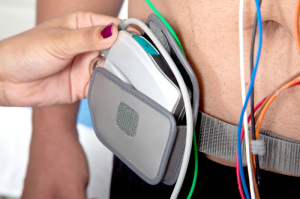by
Lauren Dubinsky, Senior Reporter | July 14, 2016

Mid-size hospitals expected
to generate $99.8 million by 2020
Despite the influx of new wearable patient monitors, traditional Holter monitors are still thriving. The global Holter monitors market for mid-size hospitals generated $77 million in 2015 and is expected to hit $99.8 million by 2020, according to a Technavio report.
Large hospitals including multi-specialty hospitals and hospital groups made up the largest segment for Holter monitors in 2015 with about 50 percent of the market share. Due to the rising popularity of home-based monitoring and the decline in hospital admittance for cardiac disorders, the sale of Holter monitors is predicted to slowly increase among these hospitals.
Mid-size hospitals have a limited amount of supplier groups and often need third-party lab testing support and medical equipment for their health care services. However, they are more accessible than larger hospitals because there are more of them and that will likely contribute to the rise in sales of Holter monitors in this segment.



Ad Statistics
Times Displayed: 179875
Times Visited: 3239 For those who need to move fast and expand clinical capabilities -- and would love new equipment -- the uCT 550 Advance offers a new fully configured 80-slice CT in up to 2 weeks with routine maintenance and parts and Software Upgrades for Life™ included.
The segment for medical settings such as small hospitals, ambulatory centers, physicians’ offices and home care is expected to experience an even higher rate of growth. In 2015 it generated $115 million and in 2020 it’s anticipated to reach $160.4 million.
Many vendors are working on developing small, wearable and wireless Holter monitors. Once those devices are commercially available, it will increase the revenue for the medical settings segment.
Traditional Holter monitors involve ECG leads and wires and the patient has to wear a box on their belt. Wireless monitors such as iRhythm Technologies’ ZIO XT Patch is an adhesive patch that is placed on the patient’s chest and can continuously record heartbeats for up to 14 days.
In
HCB News’ May 2015 report on patient monitors, almost all of the experts agreed that wearables would replace Holter monitors in the near future. Scripps Health conducted a study about two years ago that found that a wearable patch diagnosed 60 percent of clinically significant dysrhythmias and had a lower overall cost.
However, it doesn’t look like the traditional Holter monitors are going anywhere yet. Industry leaders are still bringing new Holter devices to market — GE Healthcare introduced its SEER 1000 Holter recorder in March 2014 at the third Annual American College of Cardiology Meeting.

